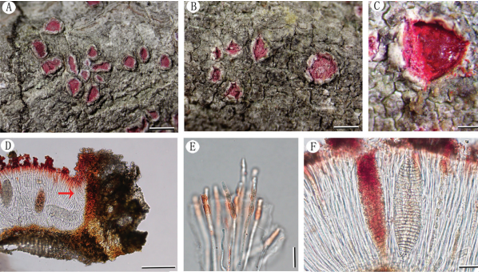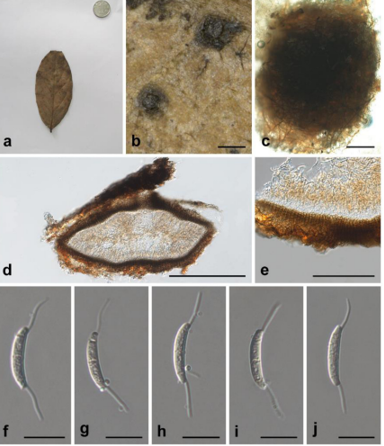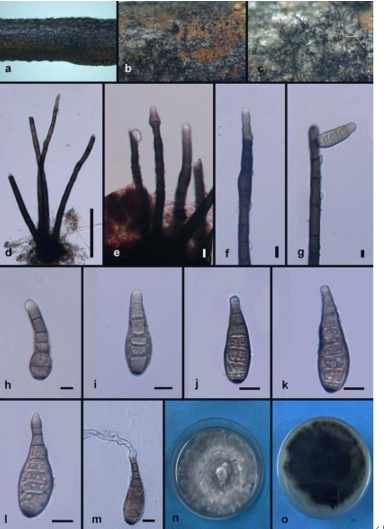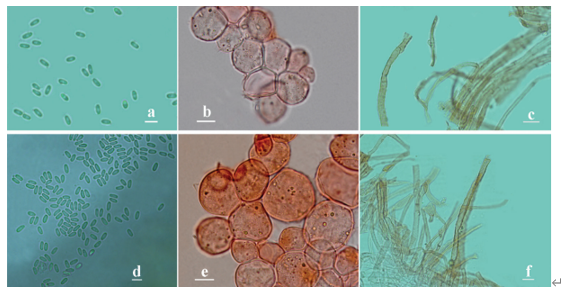Phaeotremella yunnanensis L.F. Fan, F. Wu & Y.C. Dai 2020
Index Fungorum number: IF556263; Facesoffungi number: FoF 05842
Holotype: CHINA, Yunnan Province, Yongde County, Daxueshan Nature Reserve, on dead angiosperm branch, 27 August 2015, Dai 15660 (BJFC 019764, holotype); Jingdong County, Ailaoshan Nature Reserve, on fallen angiosperm branch, 24 August 2015, Dai 15621 (BJFC 019725).
Morphological description
Basidiocarps gelatinous and no odor when fresh, foliaceous, 0.4–1.8 cm high, 1.6–4.0 cm diam, greyish brown to fuscous, sessile, lobes with single-layer structure and undulate caespitose lobes arising directly from the central point of attachment, becoming firmly gelatinous and deep brown when dry. Hyphae clamped, thin- to slightly thick-walled, 2–9 μm diam, hyaline to brownish, inflated, anastomosing, branched and slightly interwoven. Haustoria, hyphidia and vesicles absent. Swollen cells rarely present. Basidia globose to subglobose or widely ellipsoid, colorless, thin-walled, longitudinally septate, rarely obliquely septate, with a basal clamp connection, obvious oil drops and 1–4 long sterigmata, (11.0–)12.0–15.0(–22.0) × (11.0–)12.0–16.0(–18.0) μm, L = 13.7 µm, W = 13.8 µm, Q = 1.07(n = 30/1), occasionally wider than long. Basidiospores globose or broadly ellipsoid, hyaline, thin-walled, smooth, apiculate, with oil drops, (6.0–)7.0–8.0(–8.9) × 6.0–7.3(–9.0) μm, L = 7.4 µm, W = 6.9 µm, Q = 1.07 (n = 30/1), sometimes broader than long, germinating and producing secondary spores by germ tubes. Conidia usually plentiful, spherical or ovoid to ellipsoid, hyaline, thick-wall, smooth, usually originating from inflated conidiophores interspersed among basidia in the hymenium, (3.0–)3.8–5.0(–6.0) × (2.0–)2.5–3.8(–4.0) µm, L = 4.5 µm, W = 3.0 µm, Q = 1.50 (n = 30/1).
Habitat: On dead angiosperm branch.
Distribution: In China.
GenBank Accession: ITS: MK559397, MK559396; LSU: MK559399, MK559398; TEF1-α: MK559401, MK559400.
Notes: In the phylogeny (Fig. 254), the new species is closely related to Phaeotremella roseotincta (Lloyd) V. Malysheva and P. fuscosuccinea (Chee J. Chen) Spirin & Yurkov, but the former differs from P. yunnanensis by its pinkish basidiocarps when fresh, slightly larger basidia (16–20 × 11–18 µm) and basidiospores (7–10 × 7–9 µm); the latter differs by its habits on fallen spruce associated with S. sanguinolentum (Malysheva et al. 2018) and smaller basidia (11–15 × 8–10.5 µm) (Chen 1998). Macro-morphologically, P. yunnanensis resembles P. foliacea (Pers.) Wedin et al. in the brownish tint, but differs from the new species by its slightly narrower basidiospores (5.3–9.1 × 4.7–8.5 µm) and the presence of swollen cells producing ellipsoid or subglobose conidial cells. In addition, P. foliacea has slightly thick-walled basidia and grows on conifers associated with Stereum sanguinolentum (Malysheva et al. 2018).
Reference: Hai‑Sheng Yuan1,2· Xu Lu1,2 · Yu‑Cheng Dai3 ·
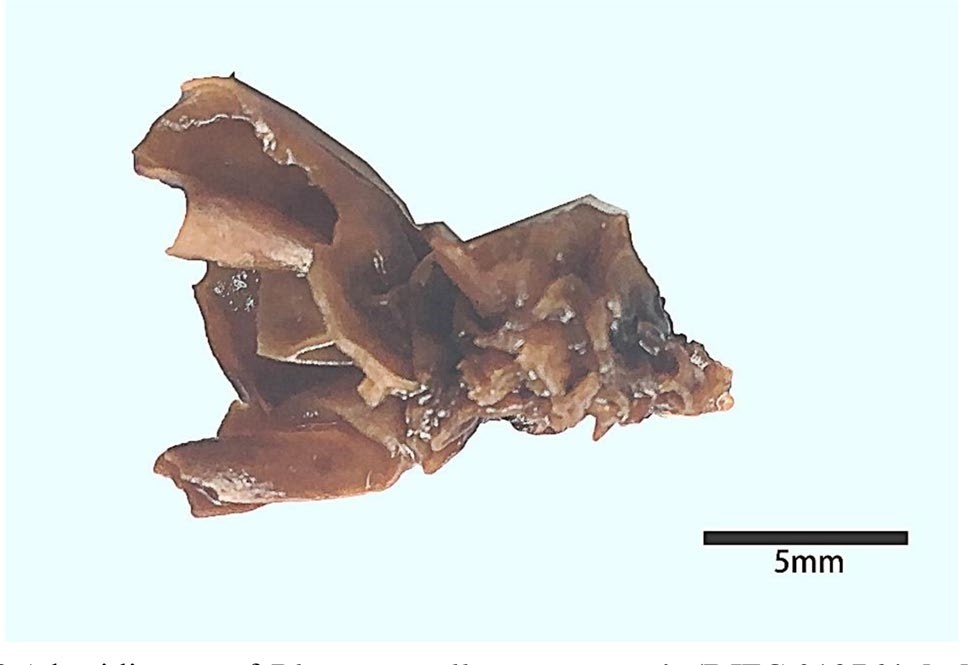
A basidiocarp of Phaeotremella yunnanensis (BJFC 019764, holotype)


